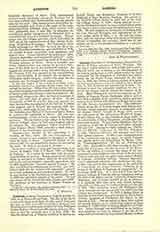

Lamego, Diocese of (LAMECENSIS), situated in the district of Vizeu, province of Beira, Portugal. The city has a Gothic cathedral, with a high tower, and a Moorish castle, and is known as the meeting place of the famous parliament of 1143, which settled the royal succession for the Kingdom of Portugal and established the old feudal Cortes, convened for the last time in 1698; the Cortes of Lamego spoken of in modem Portuguese history is the one called by Dom Miguel after he had dissolved the constitution in 1828. According to local but untenable tradition the city received the Gospel from St. James the Greater, or St. Paul. Many Portuguese authorities mention as first Bishop of Lamego Petrus Rathensis, who is said to have been a disciple of the Apostle St. James, and who subsequently became first Bishop of Braga and a martyr (see Archdiocese of Braga). The authentic history of the See of Lamego begins with Bishop Sardinarius, whose signature appears in connection with the Second (Third) Council of Braga (572) among the suffragans of the well-known Martin of Braga. Shortly before this, at the Council of Lugo (569), at the commission of King Theodomir, several new dioceses were created. It is probable, therefore, that the foundation of the See of Lamego took place between 569 and 572. Among its early bishops are: Philippus (c. 580-89), Profuturus (c. 630-38), Witaricus (c. 646), Filimirus (653-56), but scarcely more than their names is known. In 666 a new circumscription of the Lusitanian sees was made, by which Lamego was placed under the jurisdiction of Merida (Hefele, “Conciliengeschichte”, III, 2nd ed., Freiburg im Br., 110). From 693 to 876 there is a gap in the episcopal list of Lamego. On the invasion of the Moors, in 714, the Bishop of Lamego, like many of his contemporaries, was obliged to take refuge in the Asturias. It is not until 876 that we again come across a Bishop of Lamego, Argimirus (Florez, “Espana Sagrada), who is apparently identical with Argimirus (II) who, in 899, took part in the consecration of the cathedral of Compostela (cf. Lopez Ferreiro, “Historia de la Santa A.M. Iglesia de Santiago de Compostela“, II, Santiago, 1899, 192). It is doubtful if even the few known bishops of Lamego who are mentioned during the time of the Moors (except Argimirus, Brandericus, Pantaleon, and Jacobus) resided at all at Lamego; it is probable that they were only titular bishops, especially as Almansur of Cordova destroyed the city in 982. This confusion lasted till Ferdinand the Great reconquered the city in 1057 (or 1038?) and the Church was reorganized. In 1071 a Bishop Peter of Lamego is mentioned in a deed of gift by the Infanta Urraca, daughter of Ferdinand the Great, to the Church of Tuy. The see seems to have been vacant for several decades, as is evident from a letter of Pope Paschal II (1099-1118) to Bishop Mauritius of Coimbra. When Portugal was established as an independent kingdom, in 1143, by Alfonso I, the See of Lamego was revived and the Augustinian Mend Godinus (d. 1176) became the first bishop. It was at that time a suffragan of Braga. At the instance of Archbishop Peter of Santiago de Compostela, Innocent III, in 1199, rearranged the Dioceses of Coimbra, Vizeu, Lamego, and Egitania (the present Guarda), allotting the first two to the Archbishopric of Braga and the last two to Santiago de Compostela (Florez, op. cit., IV, 274 sqq.; Lopez Ferreiro, op. cit., V, 29 sqq.). Lamego remained a suffragan of Compostela until the Archdiocese of Lisbon was established in 1394, after which it was a suffragan of that see. The diocese was enlarged in 1430, when the district of Riba Coa was ceded to Portugal by the Kingdom of Leon. Until then this district had belonged to the Spanish See of Ciudad Rodrigo, but once joined to Portugal, it became part of the Diocese of Lamego. Clement XIV (July 10, 1770) created the Diocese of Pinhel (Pinelensis) in the aforesaid district, which, however, was suppressed by Leo XIII by the Bull “Gravissimum” (September 30, 1881), which replaced Lamego under the metropolitan of Braga and gave new limits to the diocese.
Lamego is bounded on the east by the Diocese of Guarda, on the south by that of Vizeu, on the west by Coimbra, on the north by Porto and Braga; it has (1909) 273,741 inhabitants, almost entirely Catholic, 283 parishes, 283 parish churches, 1144 public chapels, 314 secular priests, one college for boys at Lamego conducted by Benedictines; 2 houses of Portuguese Franciscan nuns, one house of Sisters of St. Joseph of Cluny, and one of Franciscan nuns. The present bishop (1910) is Francisco Jose de Vieira e Brito, who was born June 5, 1850, at Rendufinho (Archdiocese of Braga), studied at Coimbra, was professor of theology at the seminary at Braga, also canon and vicar-general there. On January 13, 1892, he was nominated to the See of Angra (Azores), and in 1902 was transferred to Lamego. He restored the cathedral and the bishop’s palace, enlarged the diocesan semi-nary, and assisted in the foundation of a new Catholic workingmen’s club.
GREGOR REINHOLD

